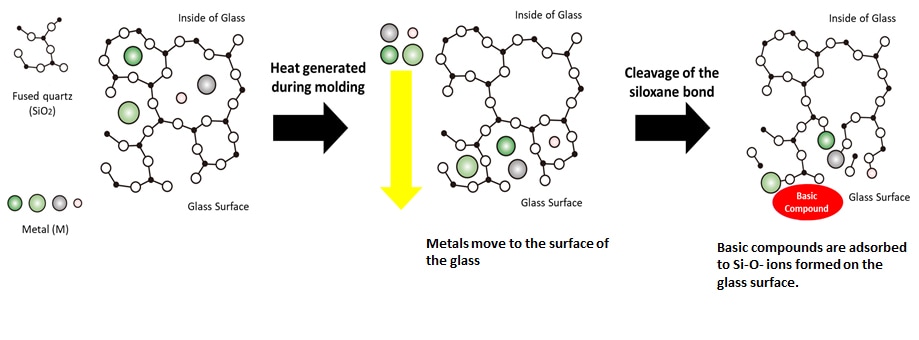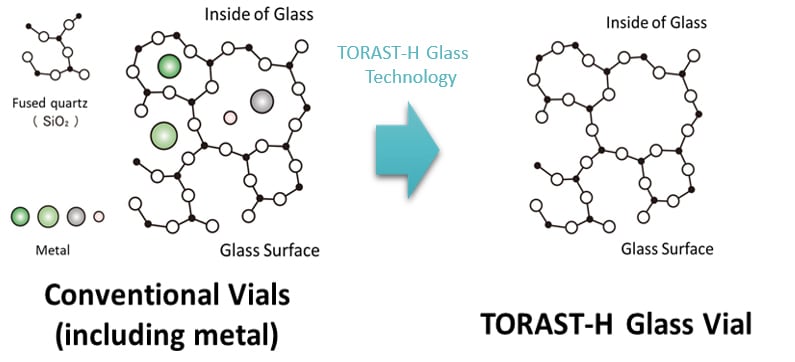TORAST-H Vial
Low Adsorption Vial
Why has low adsorption become so important?
LC/MS(/MS) has been introduced in many fields as an indispensable separation analysis method thanks to its high sensitivity and selectivity. Samples can therefore be detected even at low concentrations. However, the loss due to adsorption of the sample to equipment can adversely affect results.
Advances in instrumentation have been significant in reducing this sample loss, but consumables can become a limiting factor in achieving maximum performance.
That’s why, more than ever, consumables must be adapted to optimize results. Low adsorption is a key focus for improvement, and the TORAST™-H series continues to move with the times.
Features
Low Adsorption of Glass
The Concept Behind TORAST-H Vials
The composition of the raw material used in the manufacture of vials varies depending on the type of glass, but in general 70-75% is SiO2, and the rest consists of metal (M) oxides. Metal oxides are added, for example, to improve the moldability of the glass by lowering its melting point. Metals tend to migrate to the glass surface during molding, so the surface of glass vials tends to have a high metal content.
These metal components break neighboring Si-O-Si (siloxane) bonds to form Si-O-M (metal silanolate) bonds. Compared to Si-O-H (silanol), Si-O-M is more easily ionized to form Si-O-, leading to ionic adsorption of base compounds

As in HPLC columns, metals included in silica gel increase the acidity of silanol, increasing the adsorption rate of basic compounds. This effect can be lessened by processing during the molding stage to remove metals from the surface only, but since the glass is in a fluid state, more metal components continue to move towards the surface. This type of processing has also been shown to reduce surface area uniformity.
Taking this into account, TORAST-H Glass Vials are formed through the application of a special treatment to the glass (TORAST-HT Glass Technology) to remove metal components from the glass. The treatment transforms the surface of the glass into silica glass, preventing ionic adsorption of samples.
The world-class low adsorption of TORAST-H Glass Vials is ensured not only through the incorporation of this treatment, but also the minimization of irregularities in the glass surface through careful control of the molding temperature, as well as medical-grade packaging that prevents organic layers from forming by hydrophobic adsorption.

TORAST is a trademark of Shimadzu GLC Ltd.





